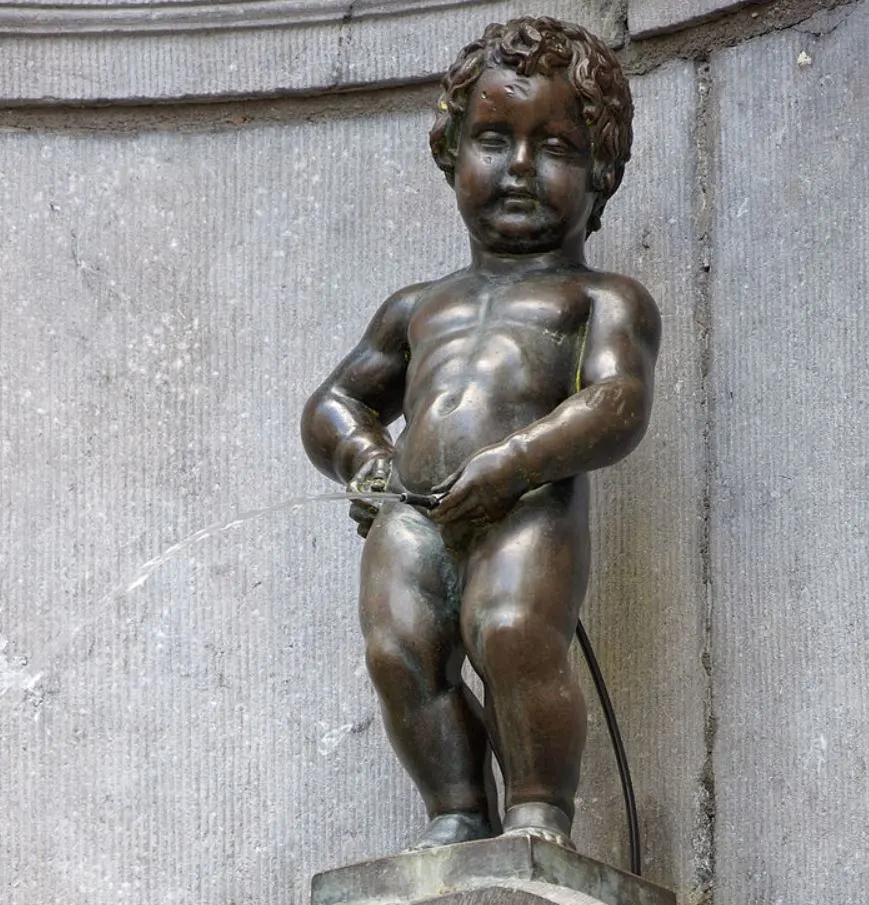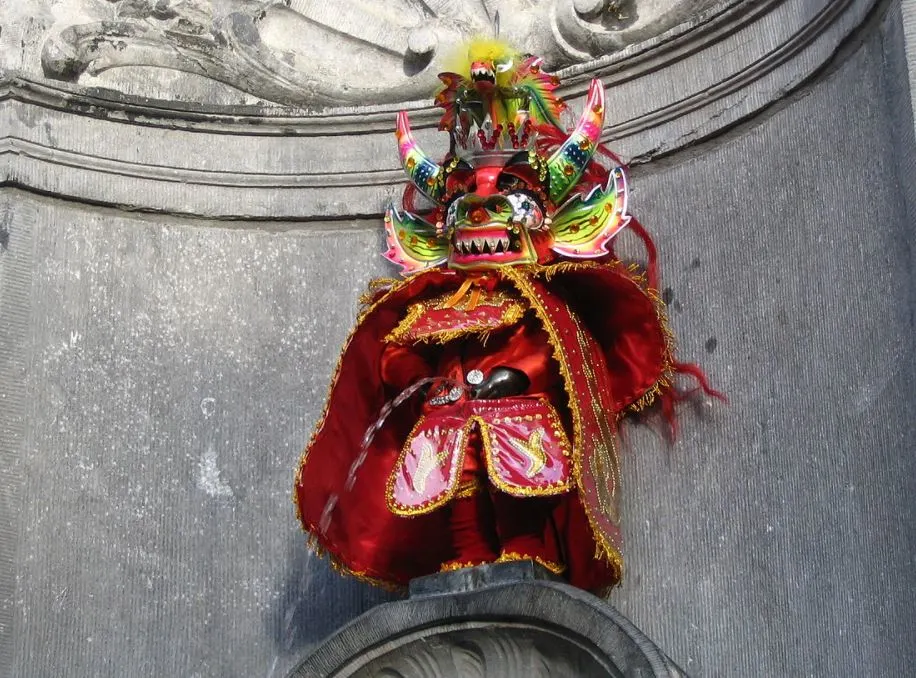One of the most intriguing statues in the world can be found in the center of Brussels, the capital of Belgium. This fascinating little statue is world-famous, even though it barely stands 61 centimeters (24 inches) tall.
In this article, you’ll discover the ultimate list of interesting facts about Manneken Pis, one of the best-recognized symbols of Belgium and one of the most iconic statues in the world.
1. It’s located just near the most famous square in Brussels
Manneken Pis is a cute statue of a little boy urinating, which is also the meaning of its name. This literally translates to “Little Weeing Boy.”
The statue is located at walking distance from the famous Grand Place in Brussels, the iconic landmark square which features the magnificent Town Hall and Museum of Brussels.
The little statue is located just a few hundred meters to the southwest of this magnificent square which is literally the heart of the city.
2. The first mention of Manneken Pis was made in the 15th century
The boy urinating in the fountain’s basin is one of the most popular attractions in Brussels and has been for many centuries. It’s also considered a symbol of Brussels’s people and reflects their sense of humor.
The funny part about this weeing boy is that this fountain has been an important source of drinking water for the people of Brussels. The first mention of this notion was even made in the year 1451.
This means that an original stone version of this bronze statue was already in place back then, quite amazing!

3. The bronze version is over 400 years old but not the original
The bronze version of the statue was created by a local sculptor named Jérôme Duquesnoy the Elder (1570-1641) and was cast and put in place in the year 1620. This means that this statue is well over 400 years old already!

The statue only stands 61 centimeters tall (24 inches) and the version we see today isn’t the original 17th-century one as it was replaced by a replica in the year 1965.
The original bronze version of the statue was relocated safely to the Brussels City Museum, located in the second-most iconic structure on the Grand Place called the “Maison du Roi (“King’s House”) or Broodhuis (“Bread hall”).

4. It was broken into 11 pieces during one of its many abductions
The little boy has been through a lot over the centuries as it was abducted from its location in central Brussels multiple times over the centuries.
It also survived the most devastating event in Brussels’ called the “Bombardment of Brussels of 1695” by the French. The little man did stop urinating for quite some time in the late 17th century because the pipes to the fountain were broken.
The worst episode in the history of the statue happened in 1817. A man on the run named Antoine Lucas stole the statue and it ended up breaking into 11 pieces during the heist. Luckily some specialists managed to mold it back together.
The perpetrator never forgot about this episode because he had to suffer one hour of being humiliated on the Grand Place in the stocks before being forced to labor for life, a harsh sentence that emphasizes the importance of the statue for the city!
5. The boy is frequently dressed up for special occasions
Some cities have enormous landmarks which can be lit up during special occasions, Brussels has a statue of a little weeing boy (well, they have the Atomium as well obviously).
This doesn’t mean that it loses its attraction because the boy has a lot of special costumes to wear during special events. Manneken Pis celebrated its 1,000th costume back in 2018, and we’re pretty sure there will be thousands to come in the following decades!

More interesting facts about Manneken Pis
6. The little statue rested on a specially carved column and urinated into a rectangular basin until the year 1770. This was the year that the current stone niche was installed which forms its background. The current basin was only installed in the 19th century as well.
7. The fountain served its purpose as a source of drinking water for the people of Brussels until the year 1851. This was the year that protective iron bars were installed which further emphasized its decorative and symbolic value for the city.
8. It’s estimated that the statue has been abducted from its position in central Brussels a total of 7 times. The final theft happened in the 1960s. The thief had thrown the statue into a nearby canal, an event that prompted the city to relocate the original version to the Brussels City Museum.
9. It’s uncertain how the statue exactly came about as there are multiple legends. These range from a little boy urinating onto the fuse of a large bomb to save the city, to a rich merchant donating the statue when his son was found urinating after being lost.
10. While most of the 1,000+ costumes worn by the little boy date back to the 20th and 21st centuries, this tradition is a lot older. The first costume worn by the little boy dates back to the 17th century, shortly after the bronze version was cast. All these costumes can be admired at the Brussels City Museum as well.

11. 2 more statues in Brussels were inspired by Manneken Pis. One is called “Jeanneke Pis” (1987) and portrays a little weeing girl. The other one is called “Zinneke Pis” and portrays a urinating dog.
12. The statue hasn’t just been the inspiration for related sculptures in Brussels as multiple replicas can be found all across the world. In front of the football stadium of Rio-based football club Botafogo de Futebol e Regatas we can find a replica as well which is dressed up in the team’s colors if they win. Other replicas can be found in:
- Colmar, France (1921)
- Osaka, Japan (1928)
- Monaco (1951)
- London, United Kingdom (1959)
- Broxeele, France (1979)
- Benalmadena, Spain (1991)
- Nagoya, Japan (2015)
If you happen to take the train at Hamamatsuchō Station in Tokyo, Japan, you will find a replica, often dressed in traditional Japanese attire, as well!

